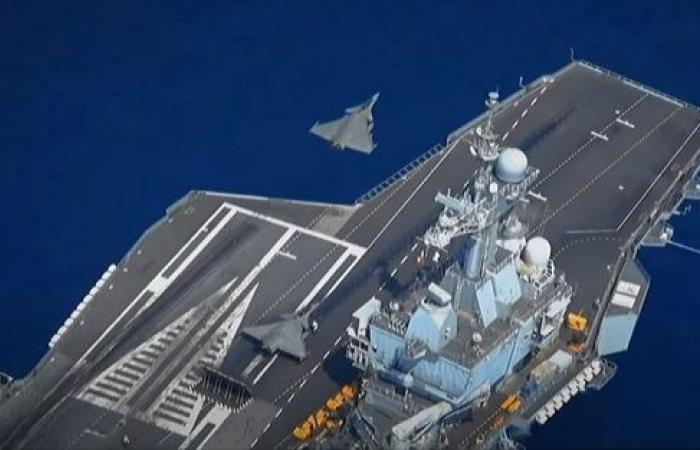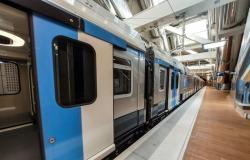
In March 2023, France and the United Kingdom agreed to maintain a permanent European naval aviation presence in the Indo-Pacific region. But the modalities of this coordination between the French Navy and the Royal Navy had not been specified.
However, in December, the British Ministry of Defense announced that it would send a carrier strike group – Carrier Strike Group 25 – to the Pacific Ocean in 2025. It “will work alongside the Japanese Self-Defense Forces and other partners to help defend peace and stability in the Indo-Pacific,” he explained at the time.
Then, last month, the Royal Navy confirmed that it had designated the aircraft carrier HMS Prince of Wales for this deployment, with HMS Queen Elizabeth having already had the opportunity to sail the Pacific Ocean in 2021. The group British naval aviation, which will use 24 F-35B fighter-bombers, should integrate two Norwegian ships, namely a frigate belonging to the Fridtjof Nansen class and a logistics ship HNoMS Maud.
The exact departure date of Carrier Strike Group 25 is not yet known, as HMS Prince of Wales is still in a ramp-up phase. But will it cross paths with the aircraft carrier Charles de Gaulle in the Pacific Ocean?
Indeed, this November 8, during the press briefing of the Ministry of the Armed Forces, Rear-Admiral Jacques Mallard, commander of the rapid reaction aero-maritime force and the Naval Air Group [GAN]confirmed that the aircraft carrier Charles de Gaulle would soon head towards the Pacific Ocean, as part of the Clemenceau 25 mission.
According to Rear Admiral Mallard, this deployment of the GAN [ou TF 473] aims “to promote a free, open and stable Indo-Pacific space with our regional partners within the framework of international law and to contribute to the protection of our populations and our interests”.
“Deploying a fairly substantial naval force in an area which, in the next ten years, will see more than 40% of world GDP transit, shows France's interest in the area through the theme of maritime security, despite the remoteness,” also argued Rear-Admiral Mallard.
If, between 1966 and 1968, the French Navy deployed naval air groups formed around the aircraft carriers Foch and Clemenceau [force ALFA] in the Pacific Ocean in order to monitor the nuclear tests carried out at Mururoa, the mission that the GAN will carry out will have a unique profile, especially since it is no longer excluded that it will make a stopover in the Philippines and Japan.
But before reaching the Pacific Ocean, the carrier group will have to cross two “hot spots”, namely the eastern Mediterranean and, above all, the Red Sea, where maritime traffic is regularly targeted from Yemen by the Houthi rebels. [liés à l’Iran]. It should therefore contribute, without delay, to the European naval operation Aspides. Then, he will head to the Indian Ocean, where he will participate in the Varuna exercises [organisé par l’Indian Navy] and La Pérouse.
One of the objectives of this mission being to “develop interoperability” with France's allies and partners, Clemenceau 25 will give the GAN the opportunity to train with the US Navy's 7th Fleet, particularly during of the “Pacific Steller” exercise, in which the Australian, Japanese and Canadian naval forces will also participate.
As for the composition of the GAN, it will be expected to evolve over the course of the mission, with the integration of foreign ships. [États-Unis, Grèce, Portugal, Italie, Maroc, Royaume-Uni, Canada, Japon, Australie]. A nuclear attack submarine will obviously be requested, as will the Force Supply Building [BRF] Jacques Chevallier, which will eventually make it possible to transfer Aster 15 missiles aboard the aircraft carrier when it is at sea. This operating mode was successfully tested during the Akila mission in April/May.
Note that the carrier group will be permanently accompanied by an Atlantic 2 maritime patrol aircraft. It will thus complement the capabilities of the embarked air group [GAé]which will include twenty Rafale Ms, two E-2C Hawkeyes and five helicopters.
The Clemenceau 25 mission will also be an opportunity to carry out several experiments. Rear Admiral Mallard thus insisted on “the massive use of data”, thanks to “several on-board data centers”, which will “extract data from our sensors, put them in common with those coming from the history of the theater and to succeed in drawing from it a relevant and essential analysis as an aid to decision-making.
For this, operational reservists, specialists in data processing, will be called upon. “Several applications specific to Navy professions will thus be developed and evaluated in real conditions, those of a complex and demanding mission,” he concluded.





